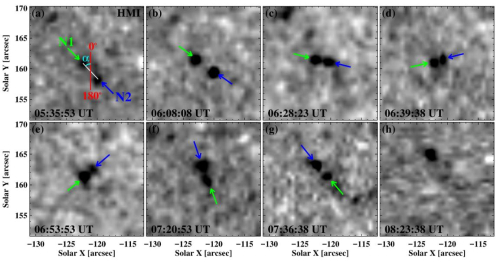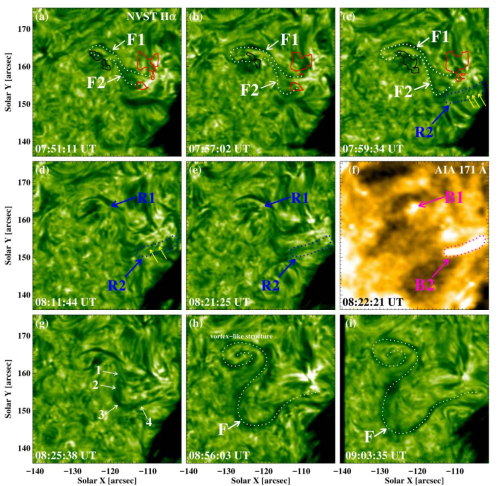The Formation and Eruption of a Solar Sigmoidal Filament
Solar filaments (prominences) are chromospheric and coronal structures that contain relatively cool and dense plasma suspended along the magnetic polarity inversion lines (PILs). Typically, the formation and eruption of quiescent filaments is an important research topic in solar physics.
Based on the high-resolution Hα images observed by the 1 m aperture New Vacuum Solar Telescope at the Fuxian Solar Observatory, the doctoral candidate DAI Jun and Prof. JI Haisheng from Purple Mountain Observatory of the Chinese Academy of Sciences presented the formation and eruption of a sigmoidal filament driven by rotating network magnetic fields (RNFs) near the center of the solar disk.
The formation and eruption of the filament are associated with the magnetic rotating network fields (RNFs). By analyzing the evolutions of the RNFs in the northeastern foot-point region of the filaments, they noticed that the RNFs result in the bending of two small-scale filaments, Fig. 1 and Fig. 2. Due to the persistent twisting of RNFs, the coalescence between the two filaments and also the fine structures in the southwestern region occurred, forming a larger sigmoidal filament. At the same time, the twist of the sigmoidal filament increased to at least 4π and became unstable. What characterizes the instability is the subsequent slow movement of the filament, which keeps nearly uniform until accelerated by a nearby jet. According to the kink instability condition, it is suggested that the filament eruption studied in the paper was triggered by kink instability.

Fig.1 Evolution of magnetic fields at the northeastern endpoint of the filament. (Image by DAI Jun)

Fig. 2 Formation of the sigmoidal filament. (Image by DAI Jun)
This observation provides evidence that RNF plays an important role in the formation and eruption of the sigmoidal filament. The phenomena also suggest that the kink instability is the trigger mechanism for the filament eruption.
This work has been published in The Astrophysical Journal.